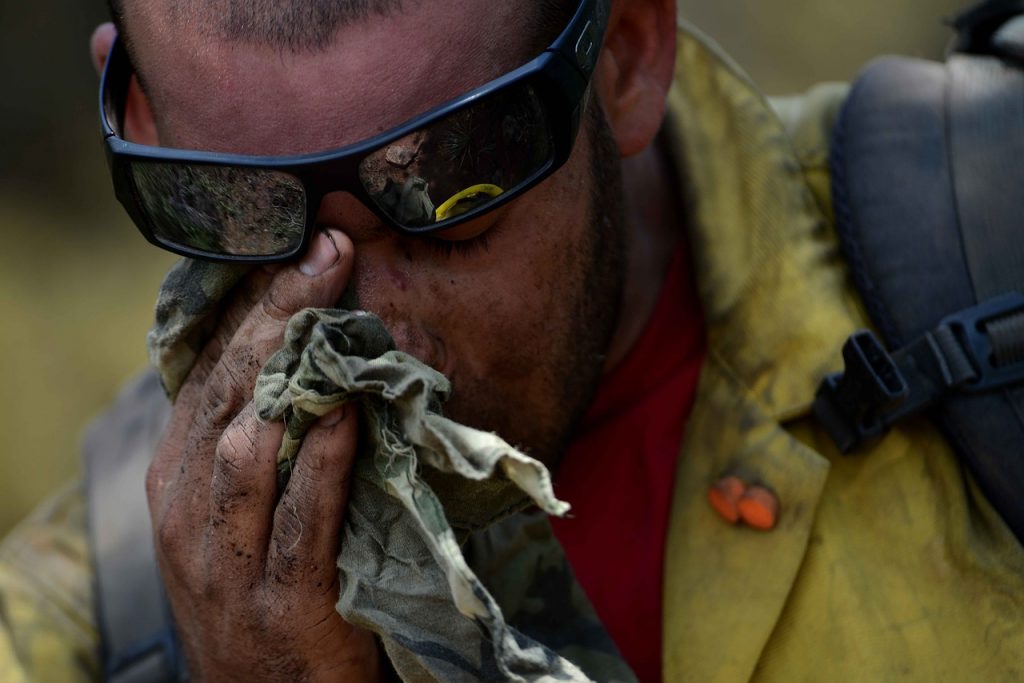
Features
Health and wellness
Hot topics
Safe Harbour: May 2015
In the March issue I outlined some of the emotions that firefighters may feel after a critical incident, and some of the signs and symptoms that may be associated with those feelings. The next step is to talk about strategies to increase your emotional resiliency, and how the organization can do the same.
April 20, 2015
By Keith Stecko
 You know about critical-incident stress and the signs and symptoms
You know about critical-incident stress and the signs and symptomsIncreasingly, firefighters are responding to different types of emergencies and disasters, which requires effective crisis-response capabilities. Critical-incident stress management (CISM) is a powerful tool for crisis response. CISM is a comprehensive, multi-component crisis psychological first-aid intervention system that covers the continuum of a crisis experience, from before it occurs through to the crisis phase.
As with pre-fire planning, organizations can pre-plan how and when CISM is applied through operating guidelines, policies, training and emergency planning. Further, educating and training of firefighters about CISM as part of the overall culture of the organization can help to build emotional resiliency on a continual basis.
Breaking down the trigger points gives an idea of how and when CISM can be applied:
Pre-crisis preparation: This includes stress-management education, stress resistance and crisis-mitigation training for front-line people and those in supervisory/management roles. The goals are to improve stress management through recognition of the emotional signs and symptoms of stress, and to provide resources and support. This is probably one of the most critical aspects of the CISM system because it gives firefighters the tools to build their resiliency by recognizing and developing strategies.
Defusing: This is a group meeting of those involved in an incident, ideally held directly after or within 12 hours of the event. An officer or firefighter may call a defusing if he or she notices something is bothering someone. The goal of the talk is to ease the symptoms and bring relief. It is an opportunity for members of the team to talk about what happened and their reactions. The group leader can provide information about normal stress reactions, available support services and details of the follow-up critical-incident stress debriefing. It important that defusing meetings are not confused with operational debriefs.
Critical-incident debriefing: This usually occurs one to seven days after the incident. The goal is to assist participants in finding physiological closure. In my experience, a lot of emotions can bubble up as responders start to digest a traumatic event and try to understand the range of reactions and responses that follow the experience. The critical-incident debriefing is like psychological first aid that informs and empowers a group after a threatening or overwhelming situation. The debriefing can boost firefighters’ resistance to stress reactions, build up their abilities to bounce back from traumatic experiences, as well as facilitate recovery and return to normal healthy functions.
Follow-up: Referral mechanisms for assessment and treatment, if necessary.
It is important that a responder considers talking about the event – what you saw, heard, smelled and did – and about your reactions, particularly how you felt. Tell your story to someone in whom you can confide. Confiding is key; it begins the healing process inside. It helps the responder release all the things that are being kept bottled up.
Understand and expect the incident to bother you. Remind yourself that your reactions are normal. Do not think you are going crazy, or you are the only one who has been affected. It is also important to understand that recovery takes time. Give yourself permission to heal. Try to be patient with the changes in your emotional state. Participate in critical-incident stress defusing as soon as possible after the event, and later in critical-incident stress debriefing. Be careful, and watch your fixation on the incident; allow yourself time to recover.
Establish or re-establish routines, engage in healthy behaviours to enhance your ability to cope with excessive stress. Eat well-balanced meals, get plenty of rest and follow an exercise program. If you experience ongoing difficulties with sleep, you may be able to find some relief through relaxation techniques.
It is not a matter of if a critical incident will occur; it is a matter of when. We can increase our resistance by being healthy and increasing our emotional resiliency. Talk openly about critical-incident stress, support one another and train for it. By doing so, a resilient fabric of support is created both on and off the fire ground.
Keith Stecko is the fire chief and emergency program co-ordinator in Smithers, B.C. Contact Keith at kstecko@smithers.ca and follow him on Twitter at @KeithStecko
Print this page